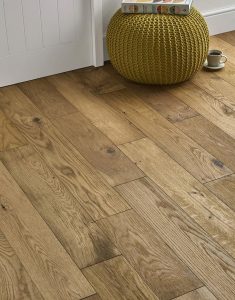Engineered oak flooring is a popular option for homeowners and builders looking for the beauty of hardwood with added stability. It’s made by layering real oak on top of a high-quality plywood or hardwood core, which gives it the appearance of solid oak while reducing the chances of warping or movement due to changes in temperature or humidity. Whether you’re renovating your living room or installing floors in a high-traffic commercial space, engineered oak floor products offer a practical mix of durability and natural charm.

What Makes It Different from Solid Oak
Unlike solid oak flooring, which is made from one thick piece of wood throughout, engineered oak floorboards are constructed from multiple layers. The top layer is genuine oak, giving it the same grain and texture as solid wood. Beneath that, there are several layers of plywood or hardwood laid in a cross-grain pattern. This structure helps prevent expansion and contraction that typically occurs with solid oak, especially in environments with fluctuating humidity.
Types of Engineered Oak Flooring
Engineered oak floors come in a variety of finishes, grades, and thicknesses. You can choose between brushed, oiled, lacquered, or unfinished surfaces depending on the look and feel you want. Thicknesses usually range from 12mm to 21mm, with wear layers from 2mm to 6mm. A thicker wear layer means you can sand and refinish the floor more times during its lifespan. This gives engineered oak floorboards a long-lasting edge over laminate or vinyl alternatives.
Installation Options and Flexibility
One of the biggest advantages of engineered oak floor is how versatile it is to install. You can float it, glue it down, or staple it depending on the subfloor and room conditions. It works well over underfloor heating systems, which is not always possible with solid wood. That makes engineered oak a great option for basements, kitchens, or anywhere that tends to experience moisture or temperature shifts.
Maintenance and Everyday Use
Taking care of engineered oak flooring is straightforward. Regular sweeping and occasional damp mopping with a wood-friendly cleaner is all it takes to keep it looking fresh. Avoid soaking the floor with water and use pads under furniture to protect the surface. With proper care, engineered oak floors can last 20 years or more, and they’re a solid investment in both style and function.
Environmental and Cost Benefits
Because the core of an engineered oak floor is made from faster-growing trees like birch or pine, it uses less oak than a solid wood plank. This makes it a more sustainable option without sacrificing the beauty of oak. It’s also usually more affordable than solid oak while offering many of the same aesthetic and structural benefits. For people who want real wood but have budget or installation constraints, engineered oak is an ideal solution.




